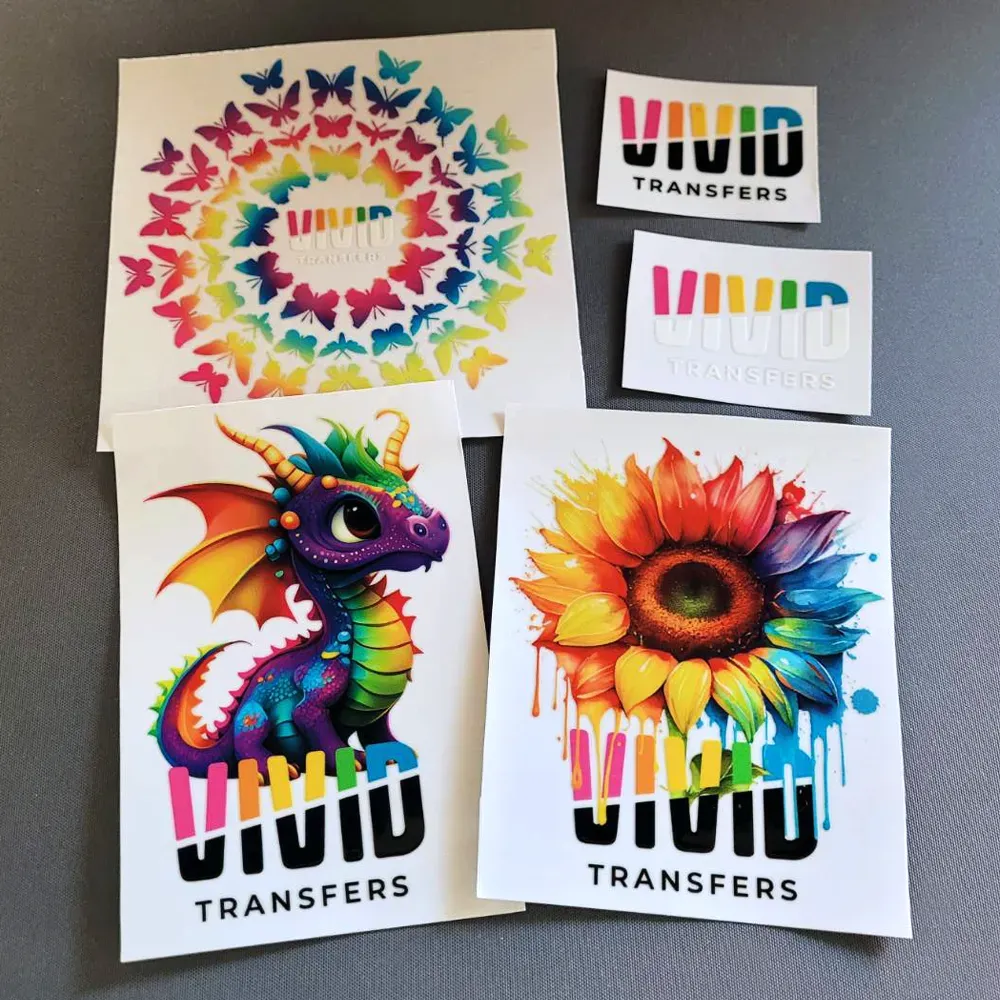UV DTF transfers, or Ultra Violet Direct to Film transfers, represent a revolutionary advancement in the printing industry, seamlessly combining technology and artistry. This innovative transfer printing process is designed to create stunningly detailed images on a wide range of materials, from fabric and plastic to wood, making it ideal for both fashion and promotional products. With the rise of UV printing techniques, manufacturers are experiencing enhanced production efficiencies and vibrant outcomes that adhere to the highest quality standards. As we explore the journey from design to delivery in UV DTF transfers, it’s essential to highlight the sustainable printing benefits that cater to eco-conscious brands and consumers alike. Join us as we delve deeper into the impressive capabilities and applications of UV DTF transfers in today’s dynamic marketplace.
Also referred to as Ultra Violet Direct to Film printing, this cutting-edge printing approach is transforming how images are reproduced on diverse substrates, including textiles, plastics, and even wood materials. Known for its remarkable clarity and color vibrancy, this transfer method is quickly gaining popularity among creators and businesses alike. Through this advanced transfer printing technique, designers can bring their concepts to life with ease, ensuring they meet modern standards of creativity and efficiency. Moreover, as the industry shifts toward environmentally friendly practices, the adoption of sustainable printing methods within this domain has become increasingly significant. Discover how alternative terms and concepts related to DTF transfers are shaping the future of printing processes and enhancing product quality.
Understanding UV DTF Transfers: A Comprehensive Overview
UV DTF Transfers, or Direct to Film transfers using UV inks, have revolutionized the printing industry by allowing the transfer of detailed and colorful designs onto a variety of substrates. Unlike traditional ink methods, this innovative approach harnesses the power of UV light to cure inks, resulting in durable and vibrant prints. From textiles to hard surfaces like wood and plastics, UV DTF transfers are growing increasingly popular due to their efficiency and the high quality of the finished products. As both manufacturers and consumers seek effective and attractive printing solutions, understanding the unique aspects of UV DTF technology is crucial.
Moreover, UV DTF printing embodies much more than merely applying ink to surface; it represents a sophisticated blend of art and technology. The printing process itself combines cutting-edge equipment with artistic expression, allowing for a diverse range of applications from custom apparel to promotional merchandise. With its ability to produce precise details and rich colors, UV DTF transfers continue to set new standards in the custom printing landscape.
Frequently Asked Questions
What are UV DTF transfers and how do they work?
UV DTF transfers, or UV Direct to Film transfers, utilize advanced UV printing technology to print designs onto a specialized film. This process involves printing high-resolution artwork with UV inks that cure quickly under UV light, resulting in durable and vibrant prints suitable for a variety of substrates.
What are the benefits of using UV DTF transfers over traditional printing methods?
UV DTF transfers offer several advantages over traditional methods, including faster curing times due to UV light exposure, enhanced durability of prints, and the ability to print on diverse surfaces such as textiles, plastics, and metals. This makes them ideal for custom applications and promotional products.
How does the design process impact the quality of UV DTF transfers?
The design process is crucial for UV DTF transfers, as the right color modes (CMYK for printing) and high resolutions (minimum 300 DPI) ensure that the final printed product matches the intended artwork. Proper design preparation leads to clearer, more vibrant images, enhancing overall print quality.
What kinds of substrates can UV DTF transfers be applied to?
UV DTF transfers are versatile and can be applied to a wide range of substrates, including textiles, plastics, wood, and metal. This adaptability makes them suitable for various applications, from custom apparel to promotional items.
How can businesses ensure the longevity of UV DTF transfers?
To ensure the longevity of UV DTF transfers, it’s essential to conduct quality control checks for adhesion and color accuracy after the transfer process. Additionally, using sustainable UV inks and proper packaging with care instructions can help maintain product durability.
What recent developments are shaping the future of UV DTF transfers?
Recent developments in UV DTF transfers include advancements in printing technology that enhance efficiency and accommodate a broader variety of substrates. There’s also a growing focus on sustainable printing practices, with manufacturers creating eco-friendly UV inks to minimize environmental impact.
| Aspect | Details |
|---|---|
| Introduction | UV DTF Transfers offer vibrant colors and detail, applicable on diverse substrates. |
| Design Stage | Use software like Adobe Illustrator to create designs with proper color modes (RGB for screens, CMYK for print) and a resolution of at least 300 DPI. |
| Printing Process | Uses advanced UV inks; dries quickly and is durable, allowing rapid production cycles. |
| Curing and Finishing | Curing with UV light enhances ink adherence and durability, followed by precise cutting of films. |
| Transfer Process | Heat press transfers designs onto substrates, ensuring optimal temperature and pressure for quality results. |
| Quality Control and Packaging | Final products undergo quality checks for adhesion and accuracy, followed by customer-friendly packaging. |
| Recent Developments | Increased demand in custom apparel and advancements in technology support enhanced production efficiency and eco-friendly practices. |
Summary
UV DTF Transfers represent a groundbreaking technology that merges creativity with advanced printing techniques, enabling manufacturers and artists to produce vibrant, high-quality prints across a spectrum of materials. This state-of-the-art process not only transforms digital designs into tangible products with remarkable detail but also caters to the growing demands for custom and sustainable printing solutions in today’s market. As businesses continue to embrace UV DTF Transfers, the opportunities for innovative applications are expanding, highlighting its significance in the future of the printing industry.

